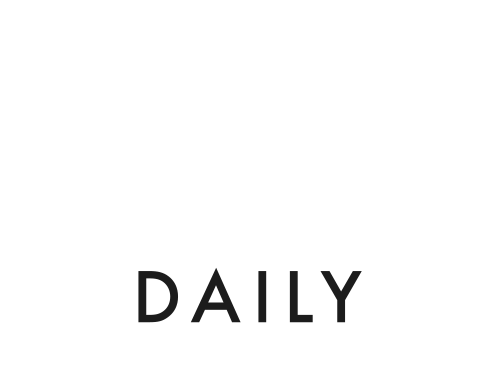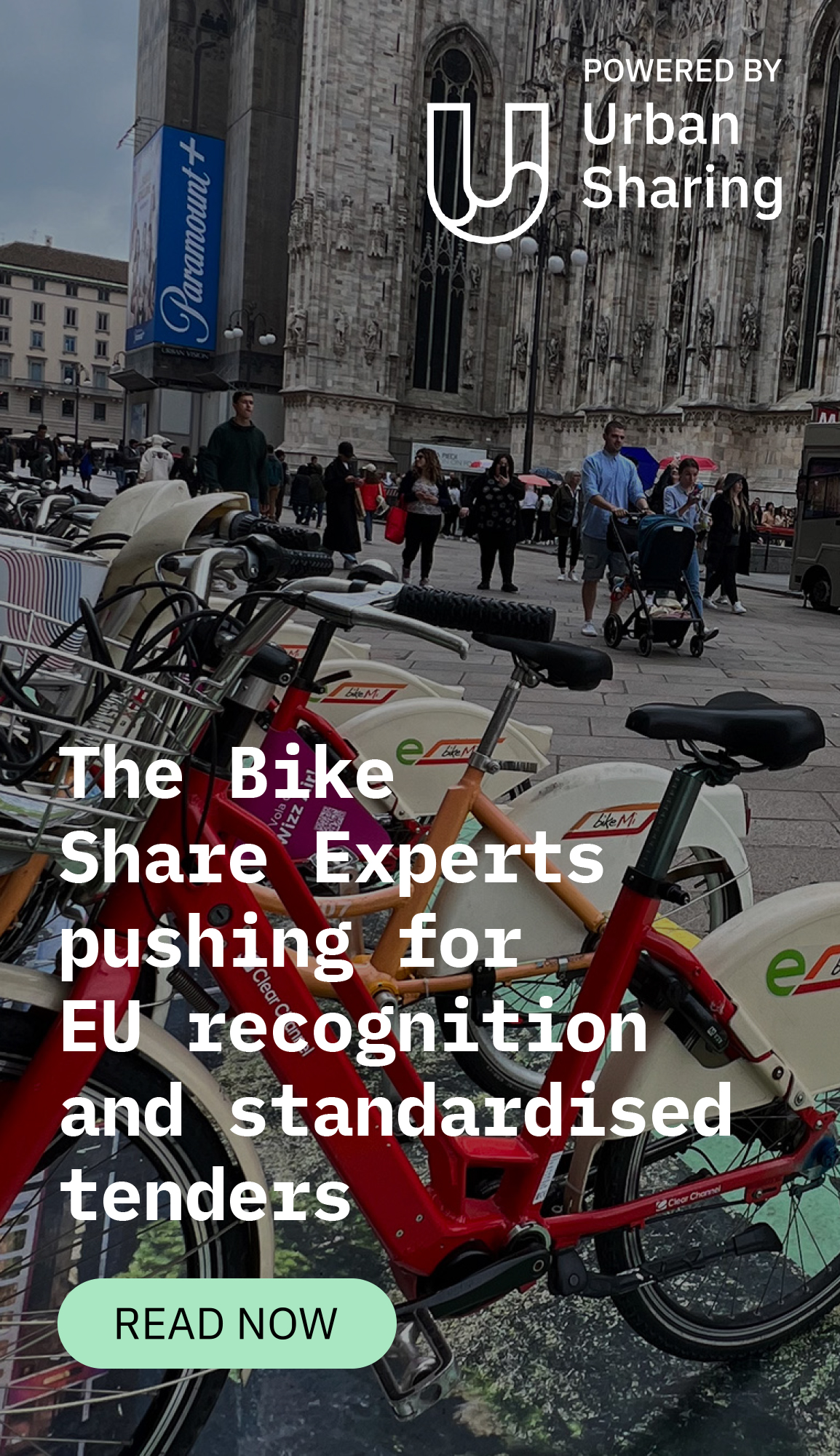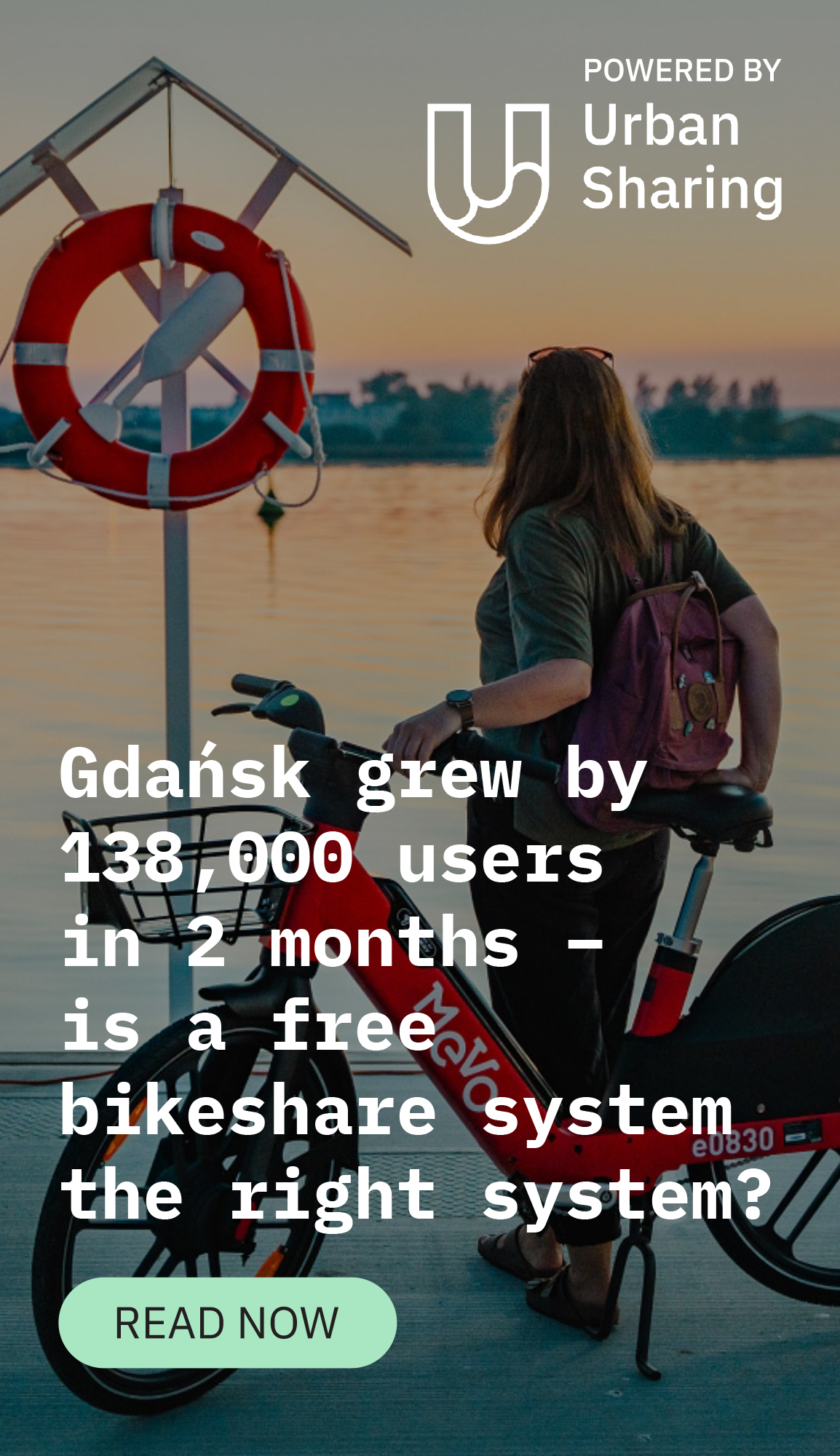Over the last couple of years, the mood within the broader mobility ecosystem has undoubtedly hit rock bottom.
Covid obviously put a sudden halt to most commercial activities for several businesses offering various types of mobility services and especially for shared mobility operators, micromobility players and the car-as-a-service ecosystem.
The subsequent recovery certainly did not go as planned. Numerous players went bankrupt or were forced to merge with direct competitors, fundraising efforts became extremely challenging and exit avenues remained very limited.
But this is progressively changing.
From my own industry conversations, I find myself perceiving that the shift in 2024 from “survival mode” to “profitable growth mode” has resulted in renewed optimism.
Shared micromobility is one space where this mindset shift has become prominent. Ryde in Norway and Donkey Republic from Denmark are two such European operators consistently delivering positive momentum on all relevant performance metrics.
Going into 2025, I expect and hope the past negative sentiment to fully vanish driven by many European businesses achieving successful milestones.
1. Companies with the best execution have survived
Taking a look back at the funding landscape, several financing avenues, which were previously available, closed. Generalist tech VCs avoided mobility as an investment theme. Corporate investors, especially automotive OEMs, financial services firms and utilities massively slowed down their direct investment activities. Therefore, given the lack of funding, a number of players had to reconsider their growth plans and often cancel their ambitious geographic expansion initiatives to refocus on their core operations. Achieving sustainable profitability has become a strategic priority. Those firms that managed to execute by combining revenue growth with reduced costs are undoubtedly emerging as category winners. Especially, because a lot of their direct peers had to stop operations.
I don’t expect many more bankruptcies in the short term. The best companies have survived. Being profitable, they will now have access to new financing options and will have much more time to continue growing at their own pace. In summary, they now have the luxury to choose what comes next.
2. New financing avenues are now open to mobility
Over the last few months or so, Estonia’s Bolt secured a €220 million revolving credit facility and Sweden’s Voi placed €50 million in senior secured bonds. This means that Equity is no longer the only source of capital available for the most established mobility players, especially to finance hardware assets.
Said differently, those businesses will be able to continue scaling operations, which often means expanding or renewing their fleets (e.g. cars, bikes, scooters, mopeds etc.) through Debt.
Across Europe, vehicle subscription is also becoming mainstream for cars (positioned within the car value chain between car rental and car leasing), but also increasingly for bikes or even for scooters. Spanish e-bike company Panot increased its number of subscriptions by 150% in seven months.
Main drivers for adoption relate to sustainability and improved affordability. This ultimately means that the shift from private ownership to both shared and subscription business models is progressively taking place.
3. Exit through M&A is already accelerating
I expect market consolidation to accelerate even more over the coming months and years. While we should still see various “obvious” combinations between direct competitors (like Dott and Tier) and commercial partners, I would very much like private equity firms to confirm their recent interest for selected segments of the mobility services ecosystem (like Star Capital with Nextbike).
For the mood to shift, we also need several landmark transactions involving larger mobility or tech giants, or automotive industry corporates, acquiring emerging mobility businesses at attractive valuations. This would help previous shareholders justify meaningful returns on their previous mobility investments, and entrepreneurs to recycle their proceeds into the next wave of emerging mobility ventures.
4. Several high-profile European Mobility IPOs are actively being considered
Over the next few years, assuming public capital markets for technology companies re-open during sufficiently wide time windows, some of the highest-profile European mobility players might try an initial public offering (IPO).
Numerous players have actively started preparing for it. Germany’s Flix had been a candidate for years, but recently partnered with EQT and Porsche. Estonia’s Bolt has been relatively vocal about its intention to become a publicly listed company in 2025 subject to market conditions. It’s worth remembering that Bolt was founded in 2013, which would mean a 12-year journey from inception to public markets.
Uber and Lyft remain the largest non-private mobility players today. While a number of smaller mobility players had tried to capitalise on the SPAC bubble to raise financing (e.g. Bird, Getaround, Helbiz), most of them ultimately faced significant operational and financial challenges.
5. Electrification creates new mobility opportunities
The progressive electrification shift is also requiring the emergence of new players. For instance, many electric vehicle charging operators have successfully achieved meaningful scale in order to deploy the much-needed infrastructure for both fast and slow charging, either in public spaces or at home or in the workplace.
Those players have received significant funding from infrastructure investors over the last three years to create pan-European networks. They also contributed to build an ecosystem of hardware and software businesses around them.
Similarly, the electrification of corporate fleets has resulted in new service or software businesses being created to facilitate that transition. This is even more encouraged by numerous new sustainability-focused regulations in various European countries.
New mobility-focused investment funds have also recently been raised (e.g. Shift4Good, Incharge) to support and finance a new generation of innovative mobility players for the road ahead.
So despite some rocky starts for many players in the new mobility space, the last few years have brought the industry to where we are today – a financial environment that’s more nurturing of profitability, clearer recipes for successful business models, and an industry on its way to fully bloom.











